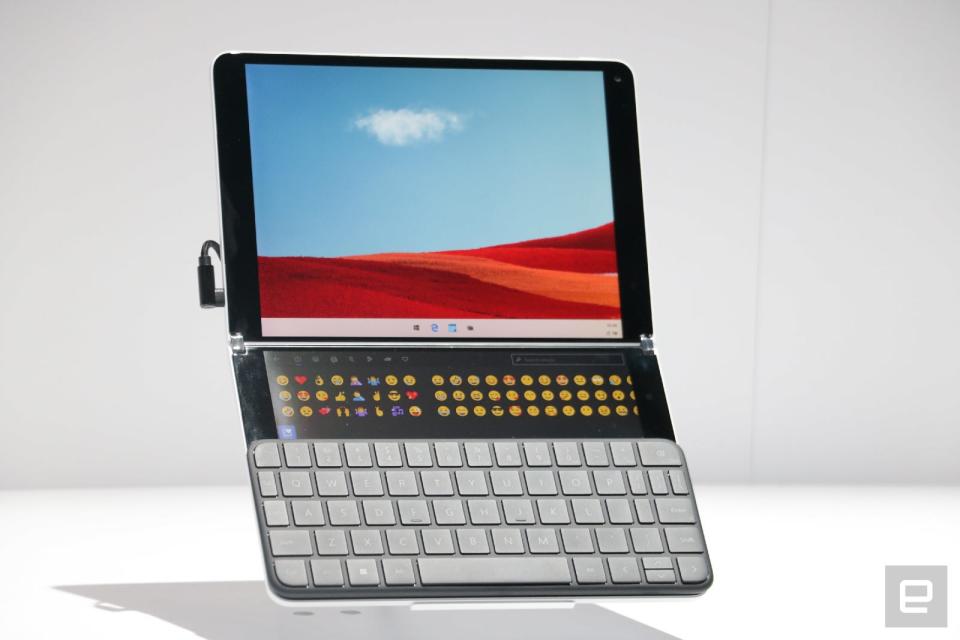Surface Neo and Duo hands-on: Our dual-screen future
Microsoft's next-generation devices feel incredible.
We fully expected Microsoft to show off a dual-screen Surface today -- what we didn't expect was the company's return to smartphones in a bold new way. The Surface Neo, the larger laptop-sized device, and the Surface Duo, a more svelte phone, are bets on the future of dual-screen devices. They hearken back to the original Surface, which paved the way for the plethora of 2-in-1 and convertible PCs we see today.
I'll say this up front: I was only able to hold the Neo and Duo for about 30 seconds each, and I couldn't turn either device on. So while I can't really say how well they handle dual screen functionality, I can at least confirm they feel like genuinely premium devices. The Surface Neo is a bit hefty, I'd wager around 1.5 pounds, but its polished Gorilla Glass case felt like a dream to hold. The Duo, meanwhile, is a wonder of portability that feels like a shrunken down Neo.
Both devices scream quality, especially when it comes to their 360-degree hinges. Over the years, we've seen Microsoft refine the hinges on its Surface devices, and that experience definitely came in handy with the Neo and Duo. Opening, closing and propping both devices at certain angles felt silky smooth, with none of the awkwardness I felt with the Galaxy Fold. Another advantage of the hinge? They can both be splayed open completely flat, or folded up neatly. There's no weird OLED hump like we've seen on folding phones.
For the most part, I was impressed by how flexible the Neo and Duo seemed. Are you in the mood to watch a Netflix show while following your work Slack on another screen? Just prop them open like laptops. Do you want to go through your email across both screens, with your list of messages on the left and the email body on the right? Go right ahead. They can each take the shape of the task you're trying to complete.
The slim Bluetooth keyboard accessory for the Neo also worked like a charm. It can magnetically attach to the bottom of the device when you're not using it, and then snap to the top or bottom of the lower screen when you need to type. Placing it at the bottom leaves a sliver of screen above for emojis, gesture writing and other functionality. Microsoft calls that the "Wonder Bar." If you place the keyboard right below the top screen, you can use the lower portion of the bottom display as a trackpad. Unfortunately, you'll have to pick up the keyboard separately, a mistake Microsoft continues to make with the rest of its Surface lineup. (The new Slim Pen is also a separate purchase, for shame.)
It's definitely too early to tell if Microsoft's dual-screen Surface vision will succeed. But they're certainly far more interesting than any of the Android folding phones we've seen so far. And with the advent of Windows 10X, even more PC makers will be building dual screen devices come the 2020 holiday season. As someone who's pined for the Courier device for years, I can't wait to get a closer look at the Surface Duo and Neo.
Follow all the latest news from Microsoft's Surface event here!


